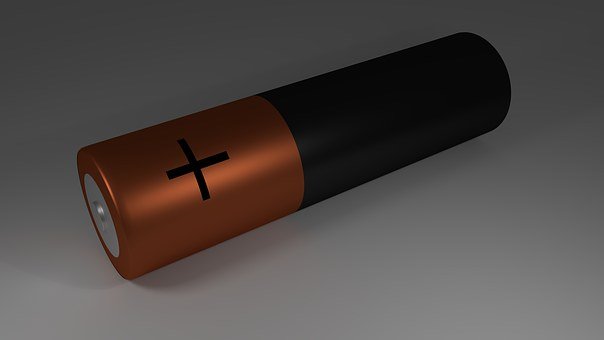Over the years, lithium-ion battery technology has matured a lot decreasing the chances of any incident dramatically. Still, things go south for various reasons. Hence, lots of people wonder how to tell if a lithium-ion battery is bad.
Among various signs and symptoms, noticing reduced capacity, low voltage, high self-discharge rate, overheating, and bloated body are common.
In this article, I am going to describe the ways to test and tell when to determine that a lithium-ion battery is no longer usable. Let’s get started.
How to Tell If A Lithium-Ion Battery Is Bad?
Before you start testing the battery, you should know what the particular model is supposed to behave.
The best way to find out is by knowing the manufacturer of the lithium-ion battery and the specs of that battery model.
After that, measure the voltage, resistance, and performance by using a multimeter. Here, you can use Universal Battery Checker Tester with Leads LCD Display.
For performance or capacity testing, you can use the multimeter I have suggested.
It can show battery capacity percentage level precisely which normal meters can’t. I have described the steps to test it below.
Now, back to the discussion. Once you have confirmed that the results shown by the meter match the original specs, you can consider it in good condition.
Or, a slight deviation in the value does not mean that it has gone bad.
Besides this inspection method, there are several easier ways to tell whether there is something wrong or not.
1. Reduced Capacity
One of the most common and first signs of a bad battery is noticing reduced capacity.
What I mean is that your lithium-ion battery won’t be powering the device as long as it used to be.
If you are not using a tester, it will take several hours to confirm this symptom. And, relying on self-discharging techniques will even take longer.
2. Low Voltage
Over time, all batteries start losing the voltage. After a certain level, the cutoff circuitry disconnects it automatically.
For example, a 4.2V lithium-ion battery can go to a 3.7V state after a certain time. After downgrading to 3.4V, you will notice that the device is not running.
And, reaching 3.0V means that it is practically dead. Those who are in a hurry to know the current state must use a multimeter.
3. High Self-discharge Rate
Like the previous point, I have to tell you that all batteries self-discharge.
What I mean is that the charge gets decreased automatically even when the battery is not working to power up a device.
Lithium-ion batteries in good condition usually don’t self-discharge quickly. Leave the battery disconnected from the device for a couple of hours.
Measure the charge capacity before and after disconnecting.
If you see that the numbers are more than the manufacturer’s provided value, you will have to assume that it has gone bad.
4. Overheating
One of the most obvious signs of a bad lithium-ion battery is experiencing overheating.
Again, check the specs of the battery and see its normal operating temperature. Detecting anything higher than that should alarm you.
Overheating is also injurious to the health of the electronic device.
5. Bloated Body
In the final stage of a bad lithium-ion battery, you will see bloating. The fearing fact is that you can’t notice it until it’s too late.
As we forget about the condition of the battery once installed, we don’t visually inspect them regularly.
Due to energy density and heat, it can result in swollen batteries. As soon as you find out something like this, replace the old one immediately.
How Do You Test A Lithium-Ion Battery?
To use a multimeter, you don’t need to be tech-savvy. Anyone can test their lithium-ion batteries at home. Here are the steps to do it.
Step 1: Firstly, turn the meter on, set the knob in the middle for measuring voltage, and you will see a reading with a decimal point after the first digit.
Step 2: Then, take the battery you want to test, and connect the meter’s red probe to the bumpy positive side.
Step 3: Right after that, connect the black probe to the flat negative side. Here, you will see the voltage measurement.
Tip: Even if you inverse the connection, you will get a reading but in the negative form.
Step 4: Finally, turn the knob to different settings, and get the desired reading. You can watch this video for a better understanding.
Frequently Asked Questions (FAQs)
How To Test Lithium Ion Battery With Multimeter?
Anyone can easily test a lithium battery using a multimeter. The steps to do it is described in the previous section.
How To Test Lithium Ion Battery Without Multimeter?
Testing a lithium ion battery without tools is not a proper method. u003ca href=u0022https://www.youtube.com/watch?v=3clZdQ6XByEu0026amp;t=49su0026amp;ab_channel=TheIronMechanicu0022 target=u0022_blanku0022 rel=u0022noreferrer noopeneru0022u003eWatch this videou003c/au003e, and you will know that bad li-ion batteries don’t bounce like the good ones when dropped on a flat surface.
How To Jumpstart A Dead Lithium Ion Battery?
You can jumpstart a dead lithium-ion battery by using a USB cable. Cut the cord on the male side, and expose the wires. Plug it in a computer, find out the positive and negative terminals on the dead battery, and touch the corresponding cables to the terminals. Do it several times, and your dead Li-ion battery will revive.
How Do You Fix A Lithium Battery That Won’t Charge?
There is a trick to fix a lithium battery that won’t charge. Drain it completely. You can make sure zero percent charge by trying to turn it on until the battery can’t. After that, recharge the lithium-ion battery for at least 48 hours.
Do Lithium Batteries Go Bad If Not Used?
If you leave a lithium-ion battery inside a device or in a discharging state, it will surely go bad after a while. But storing it properly won’t let it die for a long time.
Conclusion
I hope that you have clearly understood how to tell if a lithium-ion battery is bad. The steps and symptoms I have described above are the right ways to do the testing.
But there are countless other methods too. If you see others showing the inspection procedure differently, check their level of expertise and authenticity before trying it out.
Related Posts:

